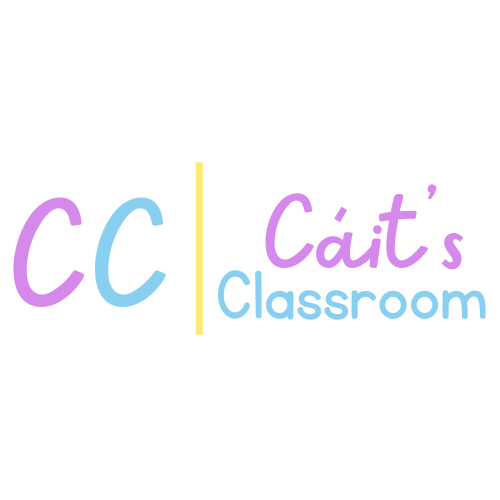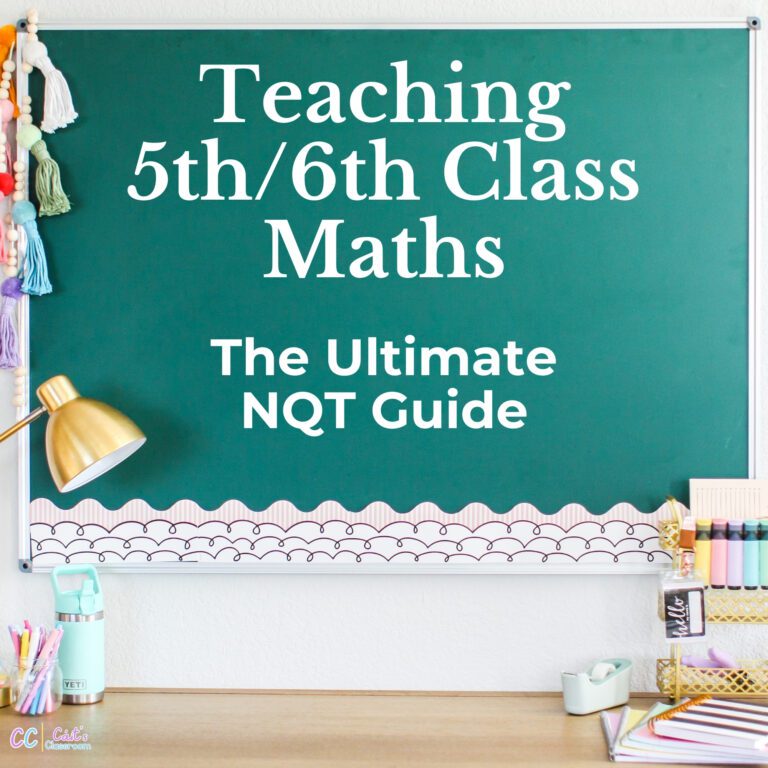Hey there teacher friends! Get excited—it’s time to set up your classroom for an amazing year teaching 5th/6th class maths! We need to talk about how to transform your classroom into a vibrant, organised, and efficient space just in time for the Back to School season. Prepping your classroom and organising your maths resources is a key step in creating a successful learning environment. By starting strong from week one, you can establish routines, set clear expectations, and keep things running smoothly all year long.
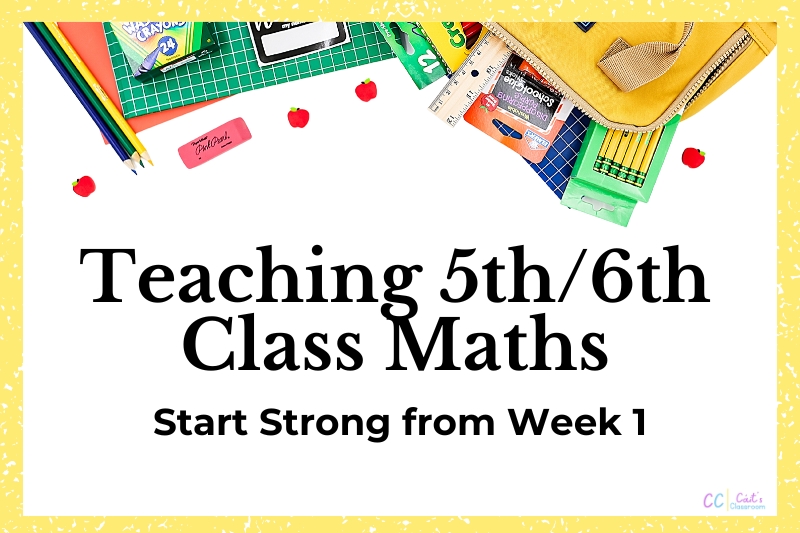
Classroom Setup
Let’s make sure your classroom is set up for success, especially when it comes to teaching 5th/6th class maths! Check out these tips for getting your classroom ready for the new school year with maths in mind:
- Classroom Layout: Arrange desks or tables in a way that promotes collaboration during maths lessons and allows for easy movement around the room. Depending on the size of your classroom, consider creating specific areas for different types of learning activities. For instance, have a quiet corner for independent work, a collaborative space for group projects, and a tech station for tablet-based learning. This setup is especially effective for maths stations, helping to keep activities organised and students engaged.
- Maths Working Wall: Create a designated maths area with a working wall for showcasing student work, highlighting key vocabulary and engaging students with interactive maths displays. Make and display anchor charts that highlight key maths concepts and strategies to serve as reference tools for students throughout the year. This dedicated space not only reinforces 5th/6th class maths concepts but also acts as a visual reminder of students’ progress and achievements.
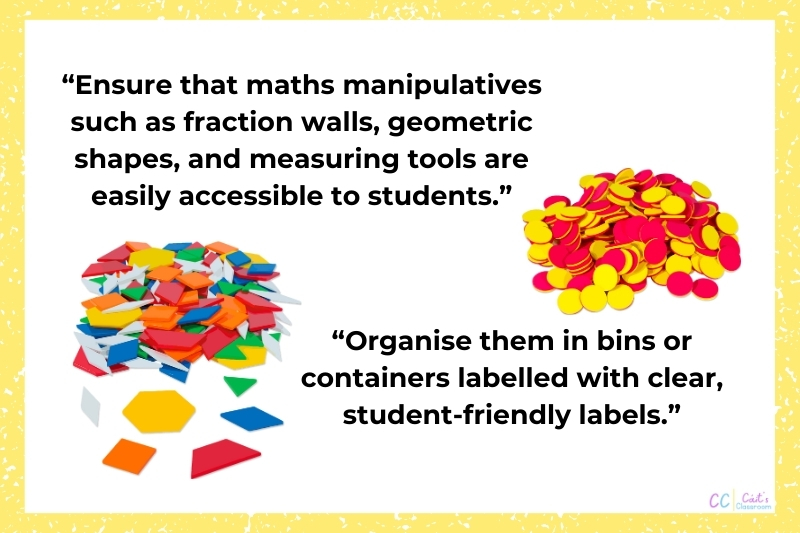
Organising Maths Resources and Folders
Effective organisation of resources and folders can streamline your maths teaching and help 5th/6th class students stay on track with their learning. Here are some strategies for organising your resources to ensure you’re prepped for your Back to School maths lessons:
- Student Folders: Provide each student with a maths folder to keep their worksheets, assignments, and notes organised. Consider using colour-coded sticky notes to differentiate between strands or strand units. Having a designated space for their maths-related materials helps children to be more organised, improves accountability and allows for easy access to resources when needed.
- Digital Folders: Create a digital folder or drive where you can store electronic resources such as lesson plans, PowerPoint presentations, and worksheets. Organise these files by strand/strand unit to quickly find what you’re looking for when planning lessons or addressing specific learning outcomes. Organising by strand/strand unit makes it easier to track what 5th/6th class maths topics have been covered so far during the year.
- Maths Stations: Set up maths stations in your classroom with designated areas for different maths activities. Label each station clearly and provide students with instructions on how to use the materials at each station so that they can work independently while you work with a small group. Setting up math stations creates hands-on learning opportunities for students to engage with 5th/6th class maths concepts in a variety of ways, promoting active learning and differentiation based on student needs and interests.
- Teacher Resources: Keep a separate folder or binder for your own printable resources, including lesson plans, assessment tools, and professional development materials. Organise these resources by strand/strand unit to easily locate them when needed. This way, when you’re prepping for class, you’ll spend less time hunting for resources and more time focusing on what really matters: effective maths teaching!
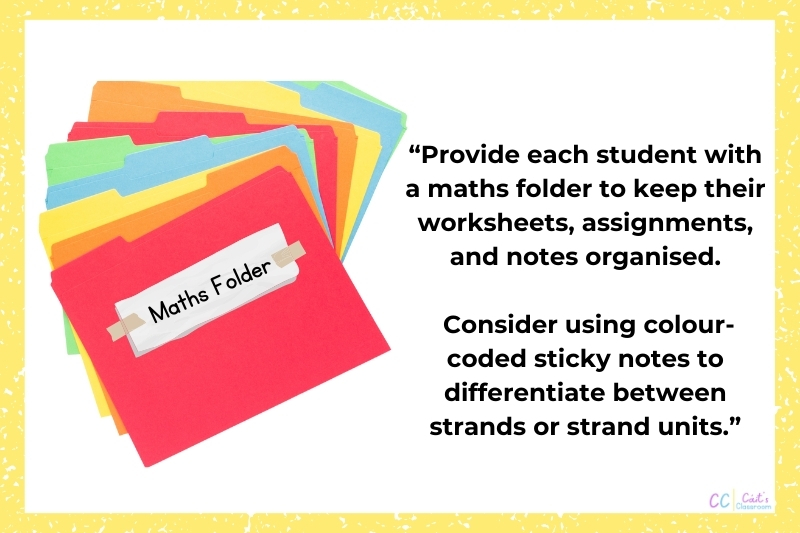
Week 1 Strategies for 5th/6th Class Maths
During the Back to School season, creating a positive and supportive atmosphere as part of your maths lessons is key. Here are some strategies to start strong from week one with 5th/6th class maths:
- Introductory Games: While you’re getting to know your class, consider starting off with some fun maths games or activities. The goal here is to break the ice and help create a friendly environment where everyone feels at ease sharing their maths skills and ideas. For example, you could have students create simple equations for their classmates to solve. These equations could reveal personal information when solved, such as their date of birth or the number of pets they have.
- Classroom Expectations: Clearly communicate your expectations for behavior and participation in maths class. Consider including these expectations when creating your classroom rules with your students. Including maths considerations in your classroom rules helps to promote a positive and respectful learning environment where children feel confident to participate in maths discussions, even when they’re not 100% sure of the correct answer.
- Start a Maths Journal: Introduce children to their maths journal, where they can not only record their problem-solving strategies and solutions but also reflect on their thoughts and feelings about 5th/6th class maths. During the Back to School season, prompt students to write about their initial thoughts about maths, any challenges they anticipate, and their goals for the year. This practice helps students develop self-awareness and a growth mindset towards maths, setting a positive tone for the rest of the school year.
- Assessment For Learning: Give your students a quick maths test to see where they’re at and figure out what areas they need help with. Then, you can adjust your teaching to suit their needs as the year progresses. I really like the Maths Matters: Tried & Tested Assessment Books from Edco for my beginning of the year assessments as they’re quick but comprehensive.
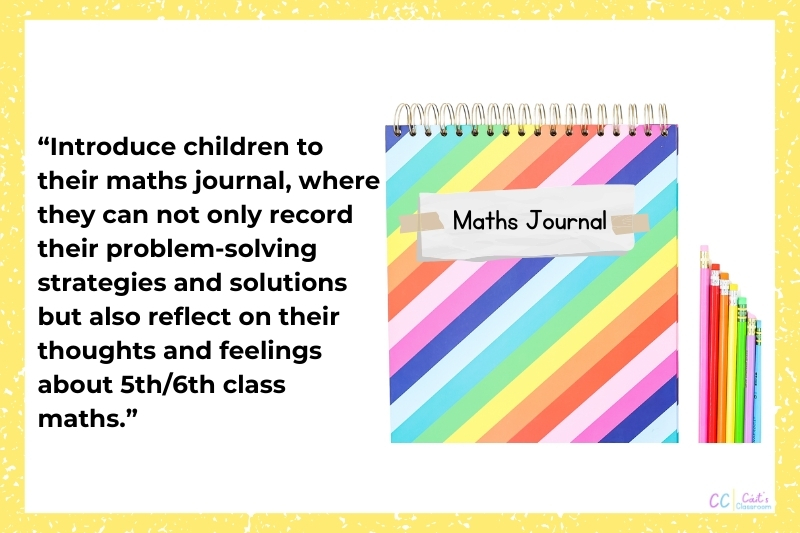
So there you have it – your Back to School plan for starting strong with 5th/6th class maths from week 1. From organising your classroom and resources to planning your week 1 activities, we’ve covered it all. Remember, the key to success is starting strong and staying organised. With these tips and tricks up your sleeve, you’re all set to have an amazing year teaching 5th/6th class maths!
Enjoyed this blog? Join the Cáit’s Classroom email list to never miss a post!
